Harvesting Hope: Reversing Desertification through Conservation Agriculture for Sustainable Land Management in Southern Iraq

June 17 2025
Desertification, water scarcity, salinization, and land degradation have long threatened rural communities in southern Iraq. These interlinked challenges—worsened by climate change and unsustainable practices—have led to declining soil fertility, reduced crop yields, and increasing vulnerability to drought.
However, a new hope is taking root in the governorates of Thi-Qar and Al-Muthanna. With the support of the Food and Agriculture Organization (FAO), in partnership with Iraq’s Ministries of Environment, Water Resources, and Agriculture, and with funding from the Global Environment Facility (GEF), farmers are adopting Conservation Agriculture to combat land degradation, protect natural resources, and build a more resilient farming future.
As we mark the World Day to Combat Desertification and Drought (June 17), this initiative is a powerful example of how sustainable land management can Restore the Land and Unlock opportunities to preserve ecosystems and improve livelihoods.
Restoring Degraded Land in a Time of Drought
This initiative is part of the project titled "Sustainable Land Management (SLM) for Improved Livelihoods in Degraded Areas of Iraq", designed to help farmers restore crop productivity on degraded lands while conserving water and improving their resilience to drought.
To highlight the economic and ecological advantages of Conservation Agriculture (CA) practices, FAO and national partners established 41 Farmer Field School (FFS) demonstration plots across Thi-Qar and Al-Muthanna. These plots serve as validation trials to compare conventional traditional farming methods with CA practices for key crops such as wheat, barley, mung beans, faba bean, sorghum, millet and alfalfa, providing hands-on training to 1,600 farmers.
Practices included:
- Minimum tillage to reduce soil disturbance
- Crop rotation or intercropping to improve soil fertility
- Soil cover crop, organic mulching using surface crop residue management to retain moisture and prevent erosion
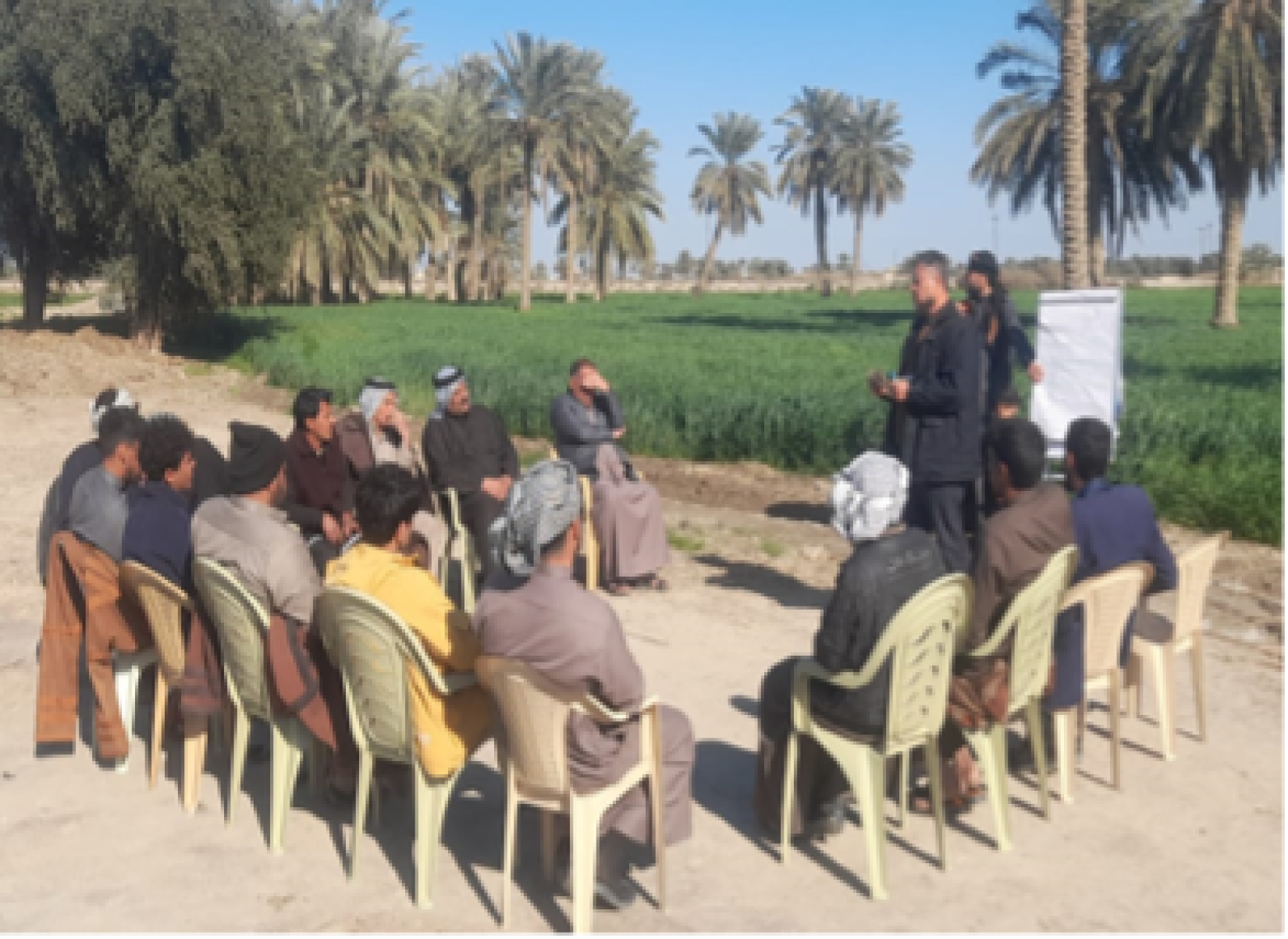
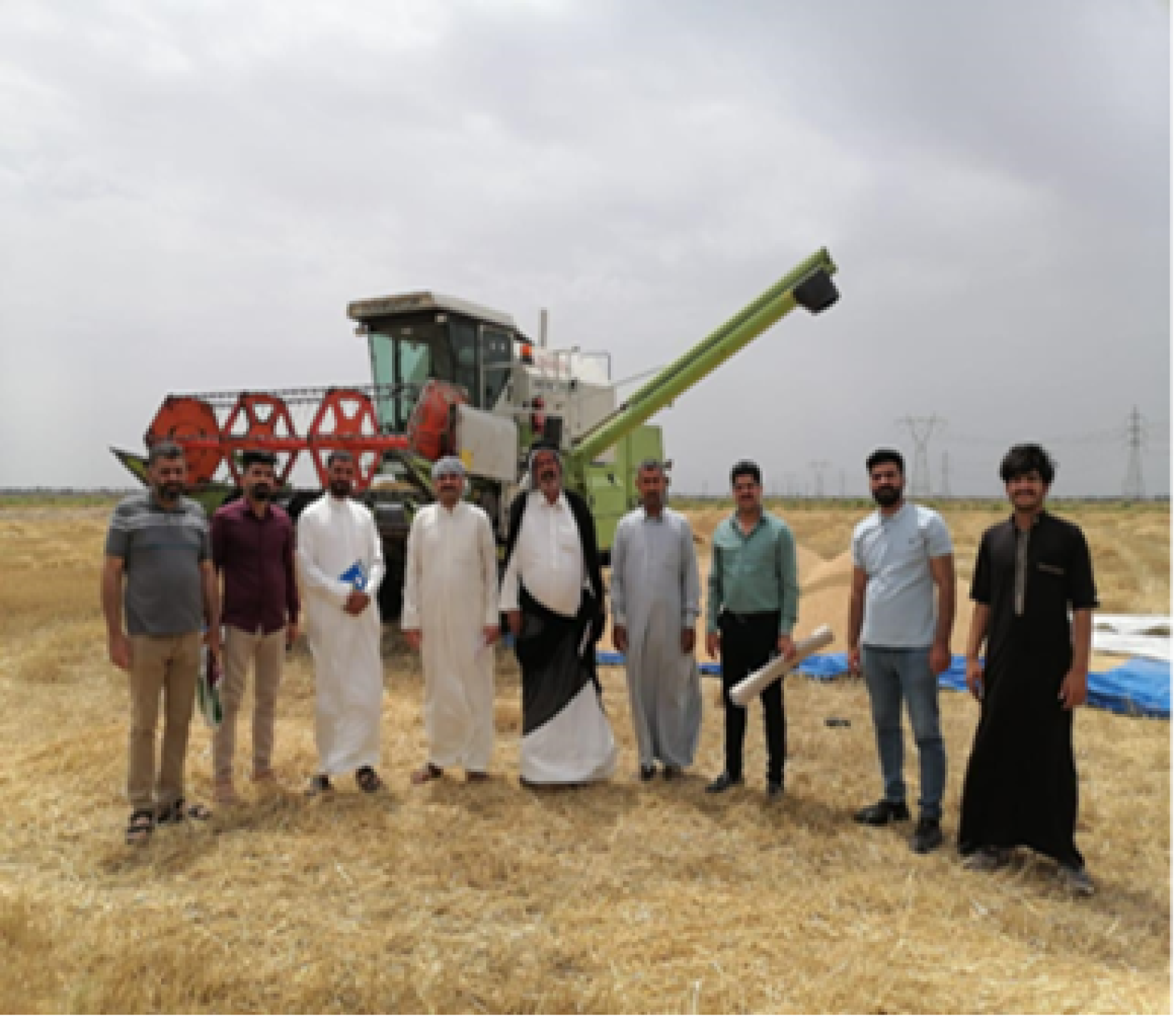
Farmers Reaping the Benefits
Despite initial hesitation, farmers quickly recognized the benefits. Improved soil structure and moisture retention led to healthier crops, higher yields, lower costs and higher economic returns—transforming their approach to farming.
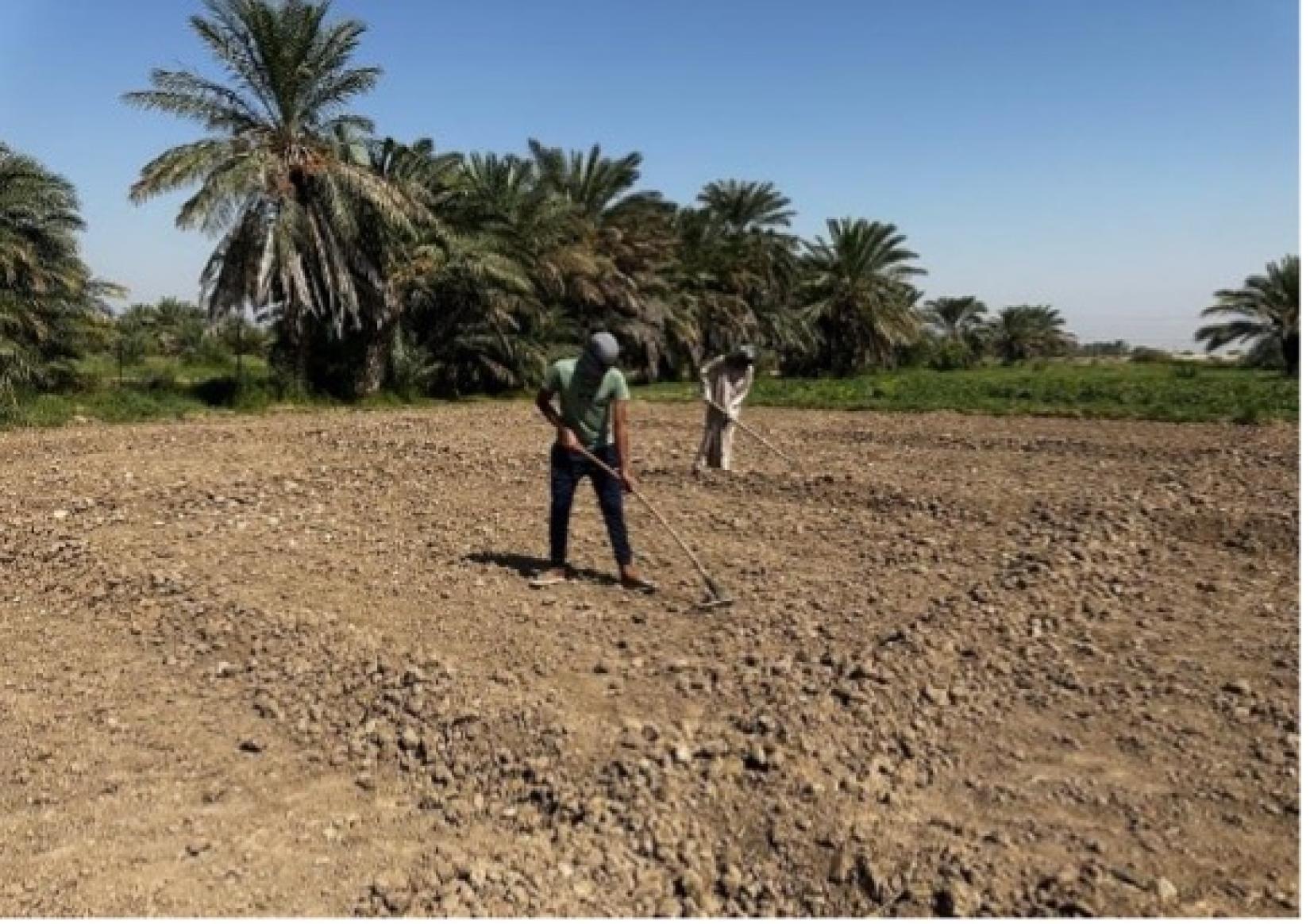
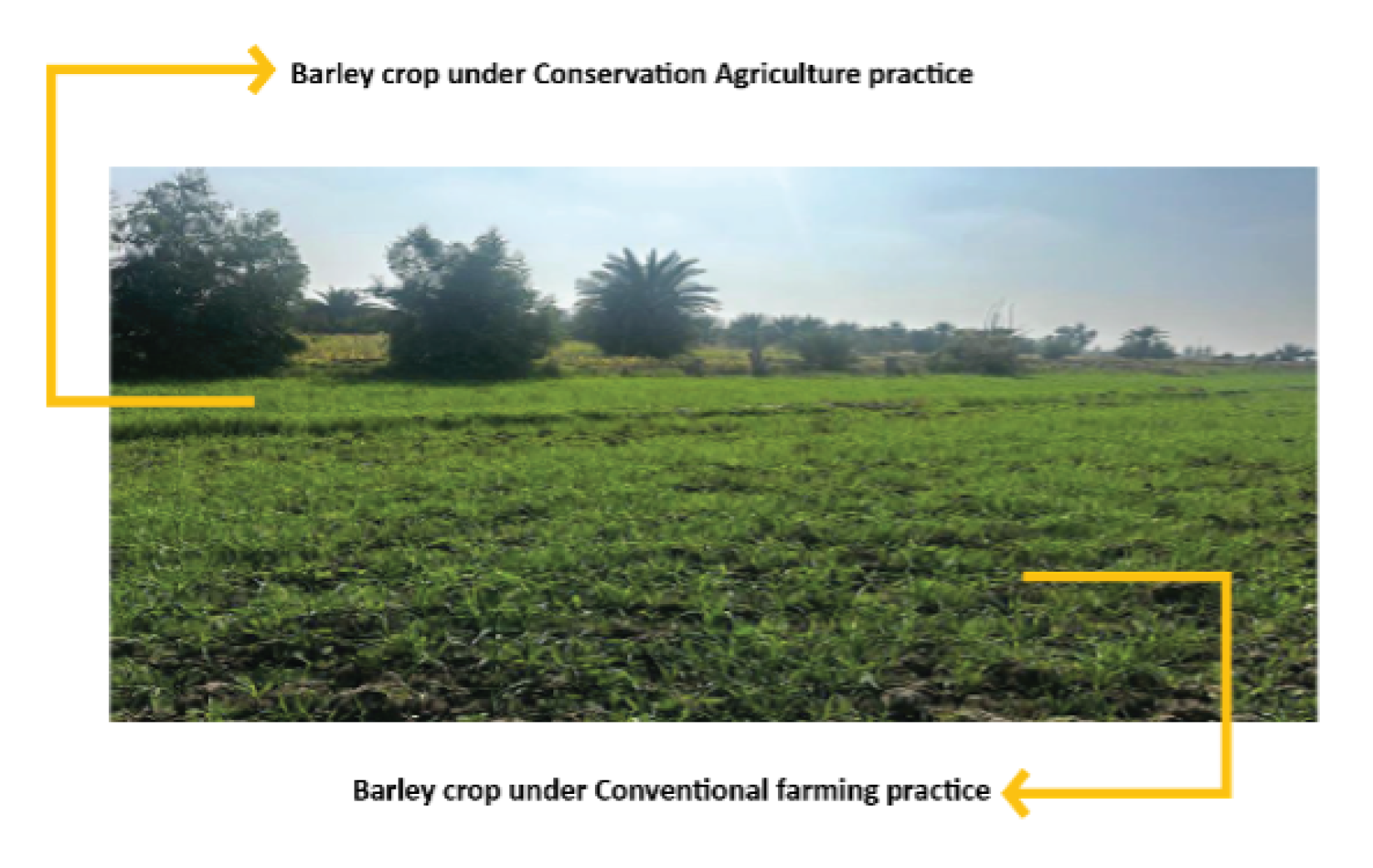
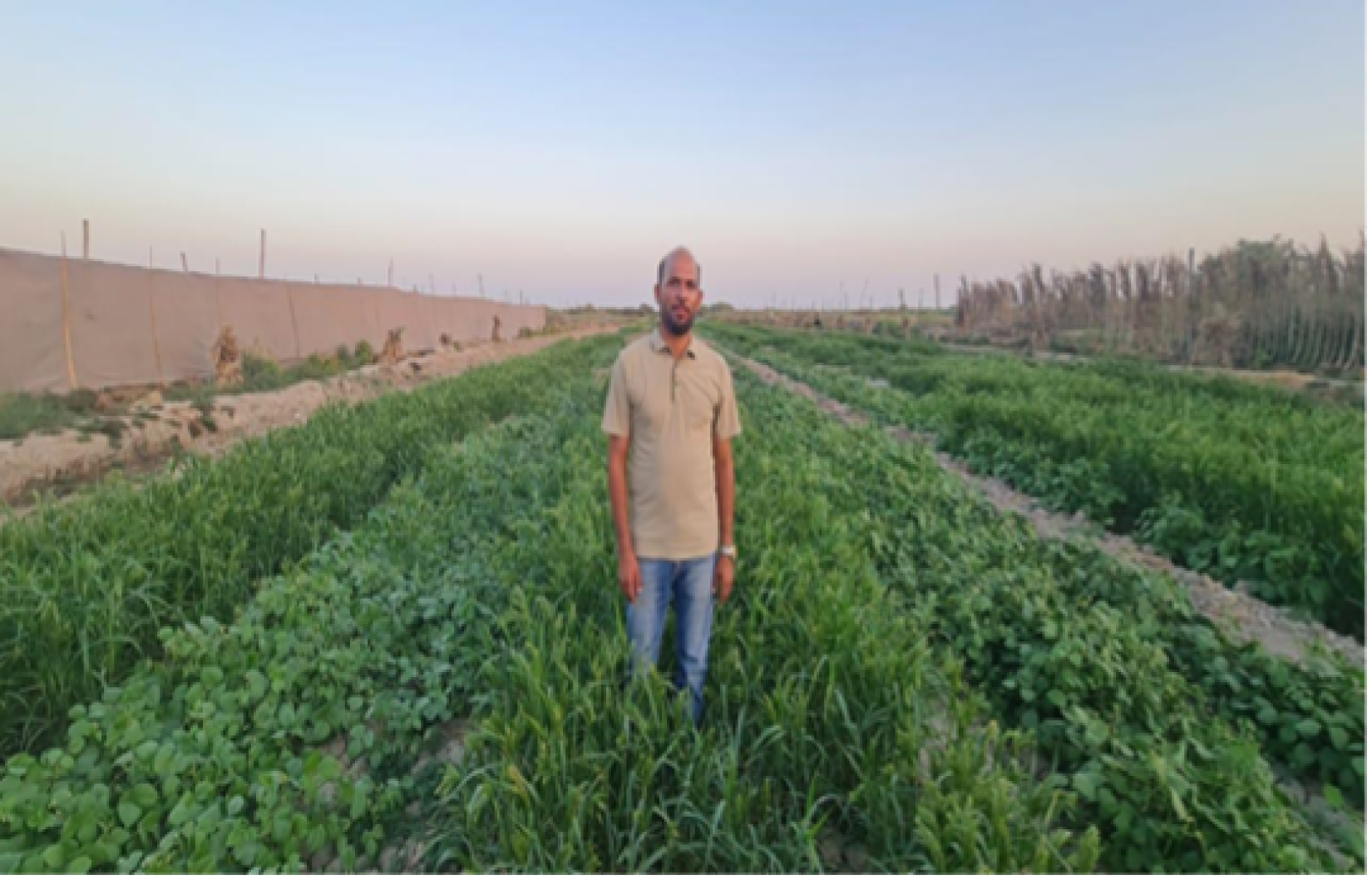
Key Benefits of Conservation Agriculture
- Increased Crop Yields
“I’ve seen my crop yields increase by around 25% since I started using conservation agriculture,” says Farmer Hashim Koti. “Before, I only earned 60-70K IQD every 2-3 months, but now I make 100-150K IQD per month. I’m using these techniques of CA on all my crops now—there’s no going back.”
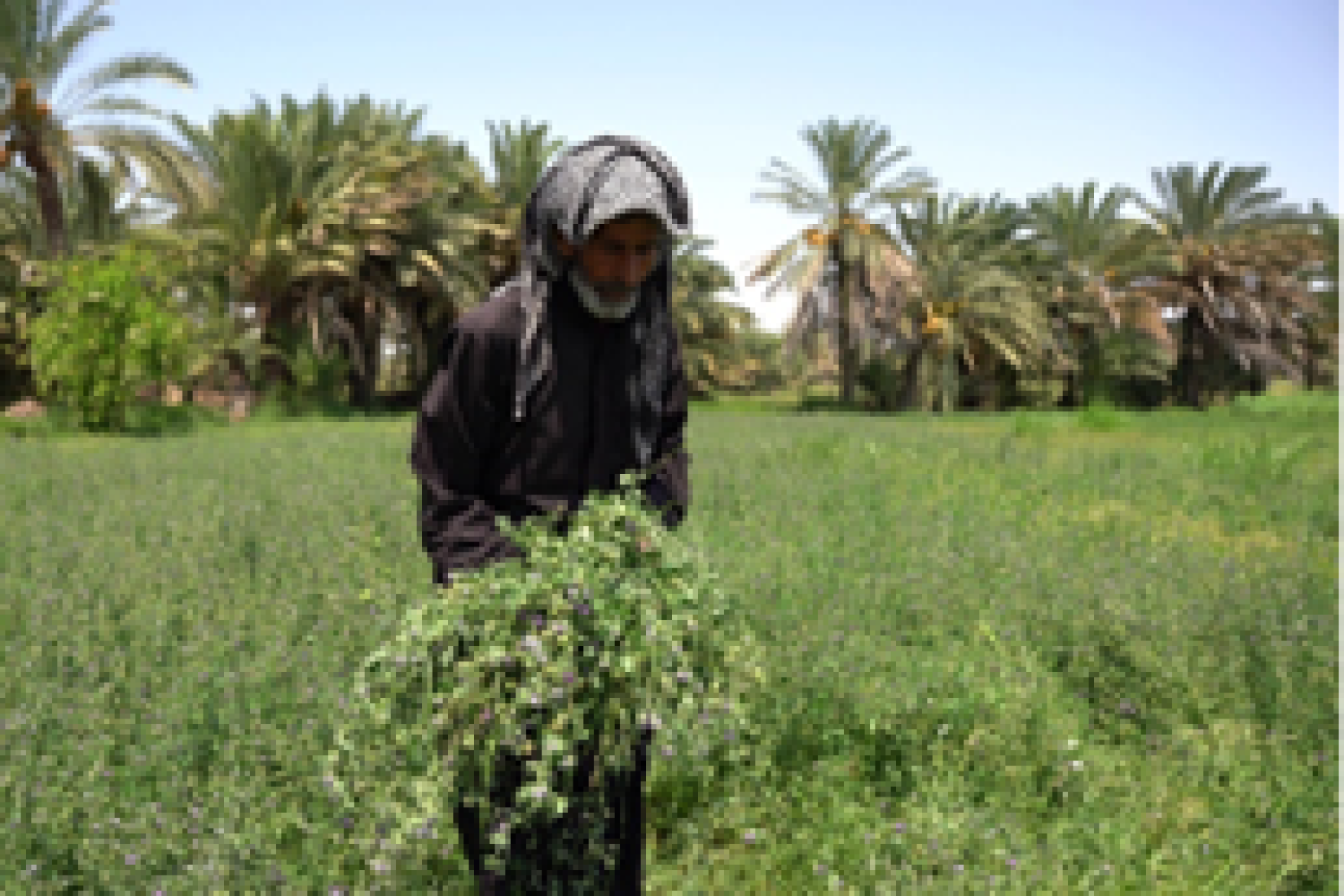
- Saving Water, Building Resilience
“Conventional farming required 7 irrigation cycles for my barley and berseem crops,” explains Farmer Sadiq Mazher. “But with Conservation Agriculture, I only need 5 cycles—that’s almost 30% water savings. This also makes soil better, improve environment and my crops are doing better than ever.”

- Reducing Costs and inputs
“I’ve saved 20% on farming costs in the first year alone,” shares Farmer Issa Ramadhan. “Traditional tillage is expensive with all the ploughing, fertilizers, and water required. With Conservation Agriculture practices, I’ve reduced these costs significantly, and the results speak for themselves. I’ve been able to reinvest that money into improving my farm.”
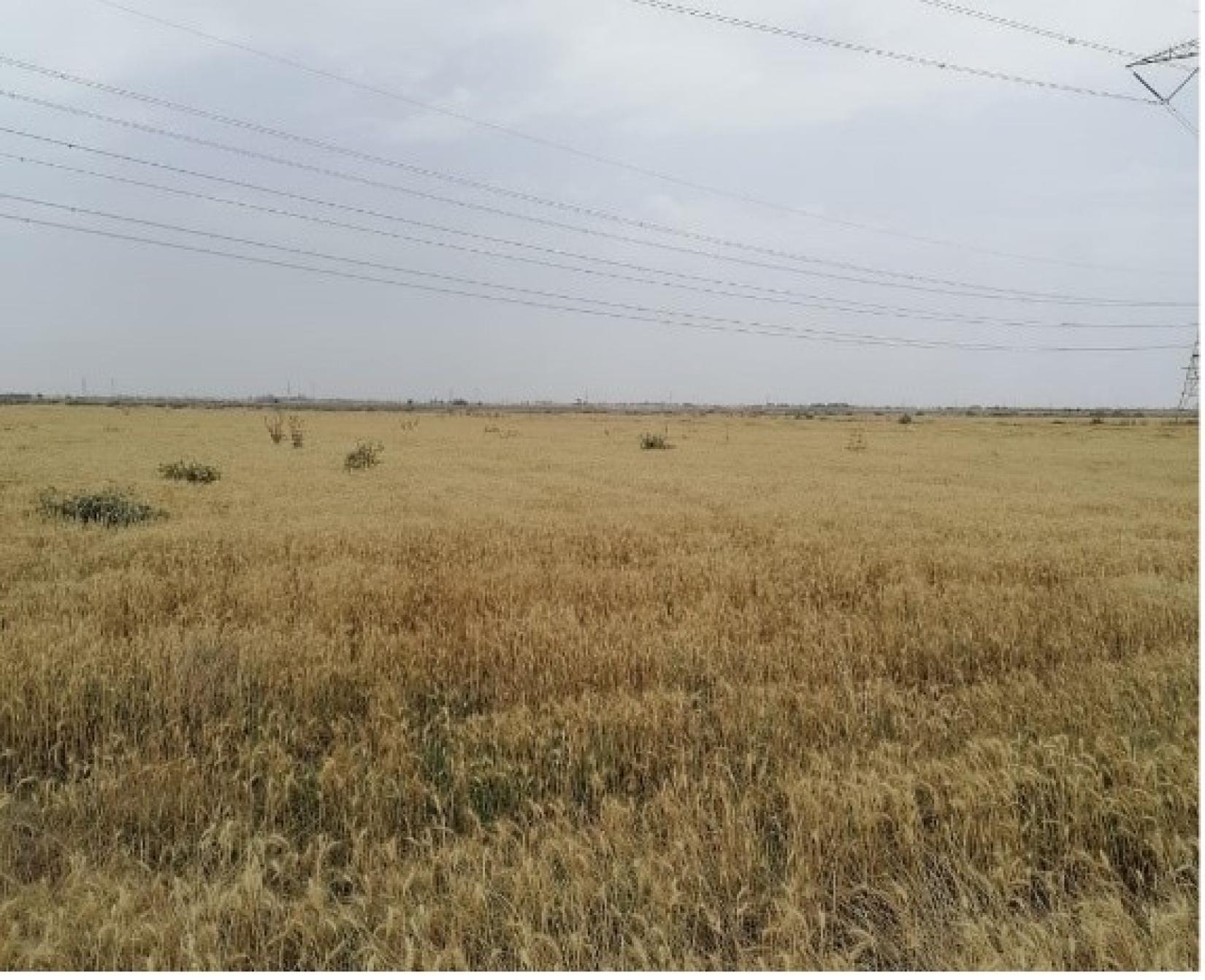
Scaling Up Sustainable Solutions
Through continuous Farmer Field School training, demonstration plots, and peer exchange, the project has inspired a growing number of farmers in southern Iraq to shift toward sustainable farming practices.
As the initiative expands, the goal is not only to improve crop productivity but also to restore degraded land, reduce erosion, and reverse desertification.
Sowing the Seeds of Land Restoration
The success of this initiative shows that change is possible—even under challenging environments. By improving soil health, reducing pressure on water resources, and increasing resilience to climate extremes, Conservation Agriculture is restoring ecosystems and helping communities thrive.
On this World Day to Combat Desertification and Drought, the story of these farmers reminds us that investing in land restoration is investing in people, resilience, and a more secure food future.
With continued support from FAO, GEF, and Iraq’s authorities, local farmers are becoming champions of sustainability—reshaping the future of agriculture across Iraq’s most fragile landscapes.
This initiative contributes to multiple Sustainable Development Goals (SDGs), including SDG 2 (Zero Hunger), SDG 6 (Clean Water and Sanitation), SDG 13 (Climate Action), and SDG 15 (Life on Land).




